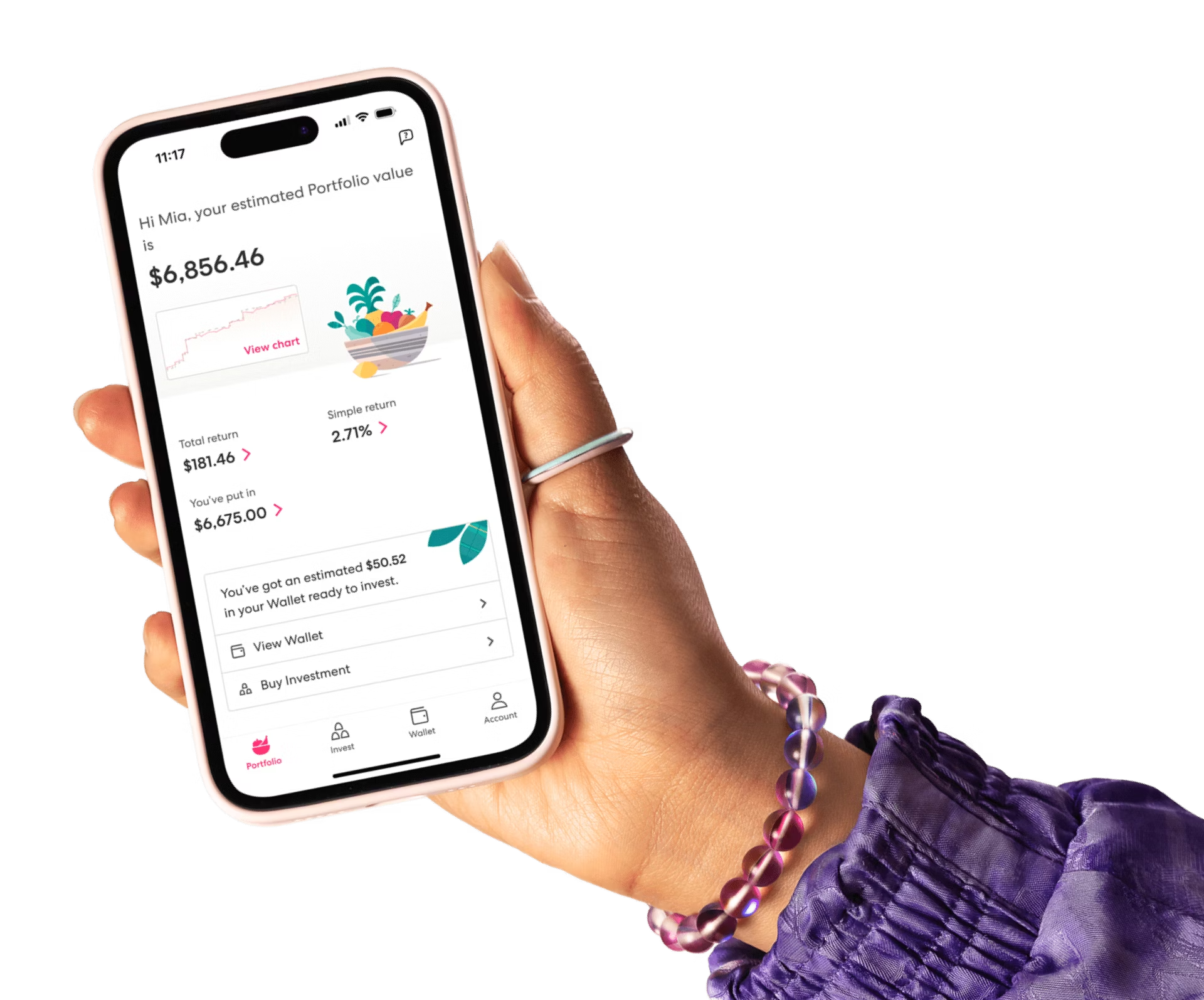Why you should set investment goals
Investing is about more than numbers. In fact, it’s about more than money as well. When you boil it down, investing is about getting a return, then (importantly) spending that return on something.

What this looks like in practice is up to you. You might be investing for a better standard of living when you retire (the really long-term), you might be investing for a wedding you’re planning in the next few years, or you might be investing to get the money together to buy a house. But no matter what you’re investing towards, you end up with a tangible product at the end of your journey.
Setting a goal of what you’re investing towards can help motivate you. After all, it’s hard to justify putting aside money for the sake of it. But if that money can get you into a house someday, or pay for a holiday, then that’s a much more “real” outcome.
Getting there faster
The great thing about investing is that, over time, it can give you better returns than you could get by just putting the money in a bank account. This means you can either get to your goal faster, achieve a better version of your goal, or both. You can see this in action by working through a few examples. Let’s say you’re putting aside $50 a week. If you kept the money in a mattress, making 0% each year, you’d have $26,000 after 10 years. That’s substantial, for sure—but you can do better than that.
If you put that money in a low-interest bank account, paying 2% interest, you’d have around $29,000 after 10 years. That’s an extra $3,000 in exchange for...not much. All you did was deposit your money with the bank instead of squirrel it away in your mattress.
But the real returns come into play when you start investing. Let’s say you took that $50 and invested it in the US 500. This fund invests in the top 500 companies in the United States. Historically, these shares have given a 10% average annual return.
Just because they returned that much in the past, doesn’t mean they’ll do the same in the future. So let’s knock that down, and say you earn an average return of 5% per year. After 10 years, your investments will be worth just under $35,000. And if the US 500 gives you higher returns than that, then you’ll be doing even better.
Small choice, big difference
When you break it down like this, you can see that these choices can have a huge impact. If you’re saving for a big holiday, $35,000 is going to let you travel for a lot longer, or go somewhere a lot nicer, than $26,000.
The other side of this is that you can achieve your goals faster. If you want $26,000 to spend on something, then investing and making a 6% return will get you there in 8 years. A 2% return will take you nearly 10 years to get there. That means you reach your goal almost two years ahead of schedule—that’s a pretty long time!
By setting a goal, you shine a light on what a big difference the different kind of decisions can make. It also helps you make those decisions in the first place.
Guiding your choices
If you’re just investing for the sake of it, then questions like “when do I need my money?” and “how much risk can I tolerate?” seem kind of abstract, which makes them hard to answer. But if you start with a real goal, it becomes a lot easier to answer these questions—then make decisions based on those answers.
The rule of thumb is that the further away your goal is, the more aggressive you can be. Saving for a house is a great example. If you think you might want to buy a house in the next 10 or 15 years, then you can be pretty aggressive—but if you’re about to put your deposit down tomorrow, then you’d be better off in something less aggressive. This is a much easier decision to make when you have a clear picture of what you want, and when you want it.
Of course, a goal doesn’t have to be super-specific. Your goal can be as simple as “I want more money in 10 years”. That’s enough to guide your decisions, so there’s no need to overthink it!
Staying in there
Finally, setting a goal can help you stay motivated. This is especially relevant during the holiday season, when money gets a bit tight and you might be tempted to raid your Sharesies account. Remember—it’s not just money in that account. It’s progress towards a goal. So if you spend it now, you’re not just spending the money. You’re spending bits of your future house, your future wedding dress, your future retirement, or your future holiday.
This is also useful if your investment goes down in value, and you get a case of nerves. Reminding yourself of why you’re investing in the first place is a good way to stay grounded during the ups and downs of investing.
At the end of the day, these goals are what investing is all about, so have a think about what you’re investing towards. It’s a great way to guide your decisions and stay disciplined in the short term, in order to reap the rewards in the longer term.
Ok, now for the legal bit
Investing involves risk. You aren’t guaranteed to make money, and you might lose the money you start with. We don’t provide personalised advice or recommendations. Any information we provide is general only and current at the time written. You should consider seeking independent legal, financial, taxation or other advice when considering whether an investment is appropriate for your objectives, financial situation or needs.
Join over 800,000 investors



